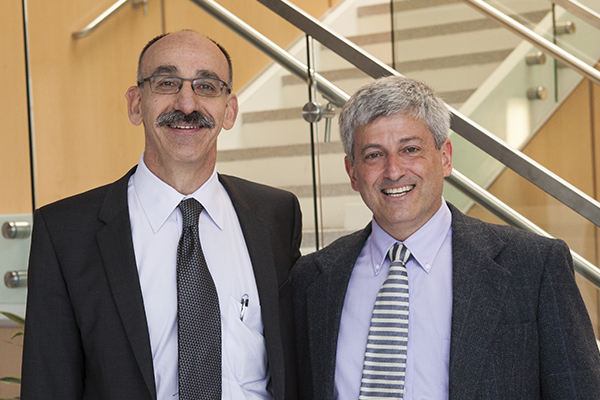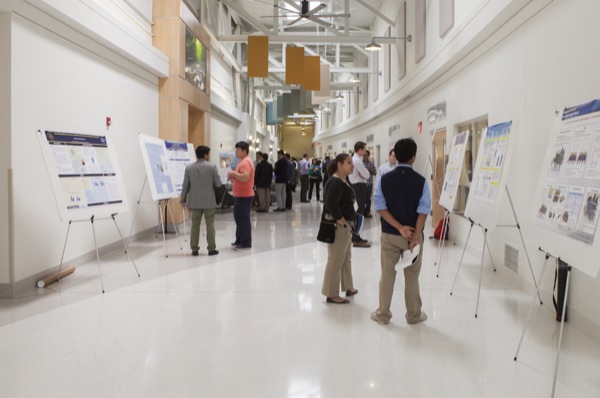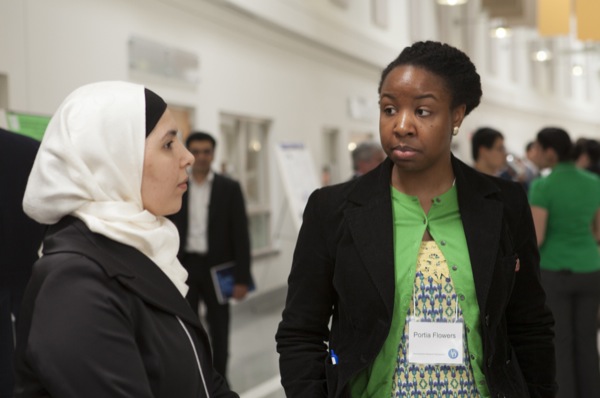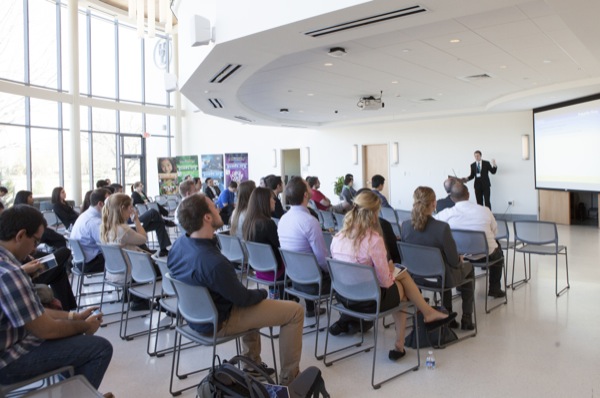


Biomechanics symposium
Speaker Esquenazi highlights role of problem solving, patient-centered research
1:09 p.m., April 25, 2014--Industry professionals gathered with University of Delaware faculty and students at the Science, Technology and Advanced Research (STAR) Campus Monday, April 21, for the 11th annual Center for Biomechanical Engineering Research (CBER) biomechanics research symposium.
Biomechanics — the study of how internal and external forces affect the movement and structural behavior of the human body — is used in the medical field for injury prevention and treatment, rehabilitation and performance enhancement in sports and exercise.
Research Stories
Chronic wounds
Prof. Heck's legacy
Alberto Esquenazi, John Otto Haas Professor, chair of the Department of Physical Medicine and Rehabilitation at MossRehab and director of the Sheerr Gait and Motion Analysis Laboratory, showcased the impact of biomechanics on rehabilitation medicine in his keynote lecture.
During his lecture, Esquenazi detailed the early history of biomechanical engineering and discussed improvements and innovations that have advanced the field, such as innovative surgeries for injuries and improved prostheses for amputees.
Esquenazi also detailed limitations of current biomechanical medicine and showcased several new methods for rehabilitation treatment, including robotic-assisted systems such as LOKOMAT and ReWalk.
As an amputee himself, Esquenazi understands that while technology advancements are important to the field, the need to incorporate user preferences into any device is equally important.
He noted that versatility and comfort are key features, and that simplicity isn’t necessarily a bad thing. He asked biomechanical researchers to recognize not just what users need to do, but to also consider what they want to do.
Before ending his lecture, Esquenazi encouraged students to approach problems from a clinical perspective and engage with engineers to improve biomechanics research and develop better solutions.
Throughout the day, attendees had the opportunity to hear from biomechanics experts, present and check out ongoing biomechanical research projects on campus, and network with industry professionals, faculty and colleagues.
Ashutosh Khandha, a doctoral student in the biomedical engineering program, presented the results of his research on forces in the knee after anterior cruciate ligament (ACL) reconstruction surgery. Other student podium and poster presentations covered a variety of research topics including gait, motor control, osteoarthritis, robotics and bone and cartilage research. The following students won awards for their research presentations and posters: Ashutosh Khandha, Axel Moore, Miri Park and Stephen Suydam.
According to several attendees, holding the event at the STAR Campus was a plus because it offered increased opportunities to collaborate and network with researchers, faculty and colleagues.
“Many of us already conduct our research here at STAR so it’s easier to navigate and network in a place we know and feel comfortable in,” said Amy Bucha, a graduate student studying mechanical engineering. “At the same time, I appreciated receiving feedback that offers a different perspective on my work.”
Miri Park, a doctoral student in the biomechanics and movement science program, added: “We are usually involved in our own work in the labs and don’t always know what others are working on, so this event is a great opportunity to connect with other researchers.”
Article by Jessica Zoch
Photos by Ambre Alexander Payne











